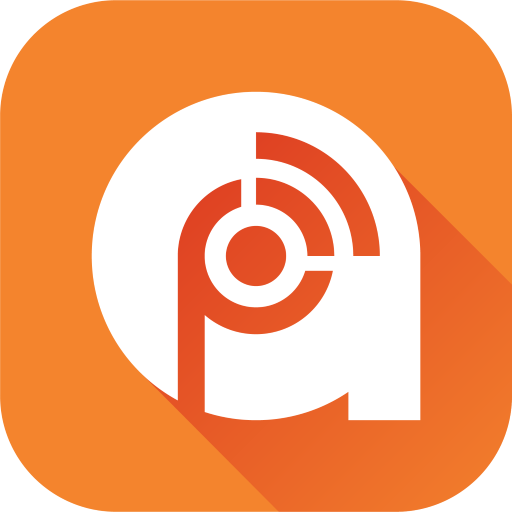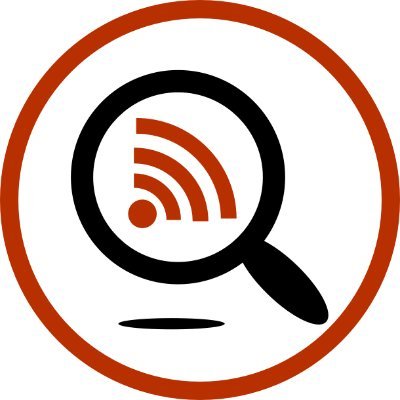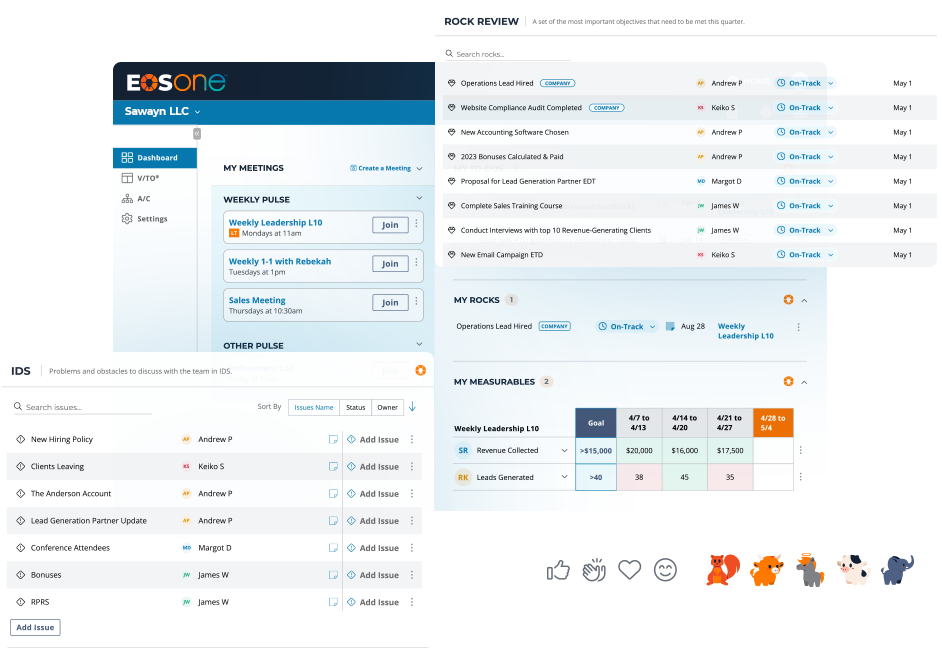Have you ever worked with, or heaven forbid, hired someone who was a really great person, and they just weren’t good at their job? We’ve all seen it. They were a great team player. They were an amazing core values fit, but they either could not or did not accomplish what they needed to.
When it comes down to it, bottom line, they were just not in the right seat. So, how do you avoid this and get your employees in the right seats? Today’s episode is about discussing that very thing. In EOS®, Right Seats is a powerful tool that focuses on placing the right people in the right roles within your organization.
It’s about ensuring every team member’s skills, strengths, and passions are aligned with their specific accountabilities. The Right Seat tool ensures that every team member finds their perfect fit within your organization, maximizing their potential. Placing all employees in the right seats creates clarity and productivity throughout your organization.
By identifying the key roles and responsibilities for a seat, you can objectively evaluate if you have a “right person” in it. This simplifies your hiring, firing, reviewing, rewarding, and recognizing because it’s clear what needs to be accomplished within the role. Additionally, focusing on the right seats will help with capacity planning in your organization.
The right seats are part of the EOS Accountability Chart, which you should always have mapped out 6–12 months ahead of time. Remember to focus on structure first, people second. Seats are never created just to fit someone into your company. Imagine a whiteboard and inheriting your company as it is right now and saying, “If we could start from scratch, what is the right structure to be more efficient, to clearly and cleanly deliver exactly what we do?”
Let’s come back to that Accountability Chart. How do you know if someone’s in the right seat? You determine this using your People Analyzer® and the EOS GWC™ tool. That’s the right seat portion of the People Analyzer. G stands for “get it”.
“Want” is the W, and “capacity to do it” is the C. When you’re using this tool, it’s important to be open and honest. First, you have to ask yourself, does the employee get what the seat is? Do they understand what must be done and what it takes to do their job? If someone is in the right seat, it’s part of their DNA.
I often ask teams at this point to think about a bookkeeper. If you think about the DNA of a bookkeeper, you might hit some bullet-pointed kind of things that would globally, accurately describe the DNA of someone who would be a great bookkeeper. They might be more introverted, and more organized.
They might love having a number of computer monitors going at the same time. They might really progress and think in linear terms. They might appreciate being in a quieter part of an office and less outward facing, more inward facing. They have natural problem-solving skills—things like that.
If you compare that DNA to someone who’s more of a hunter-salesperson, they might be more outgoing. They’re more extroverted, maybe a little more gregarious. They like being outside of the company. Their office might be the front seat of their car. They might not be perceived as the most organized person. Things like that are DNA; it’s in the very fiber of who they are.
The second one: Want it. You want to evaluate if your employee truly wants that seat. Again, this is where you have to be open, honest, and vulnerable. You can’t want a seat for someone else. You have to look at whether they come in fired up, excited, and leave with as much energy at the end of the day as they came in with at the beginning of the day.
If you truly want it, you would do it whether you were paid or not. It’s the kind of thing that brings out the best in who you are. And by doing that work, you in turn get the energy and excitement from what you get to contribute. It’s a reciprocity thing.
Last, you’re going to ask yourself if that employee has the capacity to do the job.
Do they have the time, the energy, and the experience to successfully sit in that seat? When you’re evaluating this, do not get caught in the “potential trap.” If they don’t have the skills today, they’re a no for now. If your organization needs those skills at their highest functioning level, you have to have someone who’s there at this moment.
If they could grow into it over time, you cannot compromise the greater good of your company for that employee’s learning curve. If they can learn their seat, they’re the right person, and if they can get it done in a time that suits the organization, then absolutely invest the time. Lack of delegation to any seat is usually a sign you don’t believe someone has the capacity.
They either don’t get it, don’t want it, or can’t get it done because you don’t trust them. You will hang on to it as a good leader and get it done yourself. Now, if you answer no to any of the above questions–get it, want it, or capacity–that employee is in the wrong seat. Should that happen, it’s time to make a change.
If the employee is a right person, meaning they are a core values fit, you want to look at The Accountability Chart™ to see if there’s an open seat they could fit in. You go through that GWC process for the new seat to ensure that they truly get it, want it, and have the capacity to succeed in that role.
It is a binary answer. It is a “Hell yes!” or a “Hell no!”. Anything short of 100% yes is no. If there’s not an open seat, you have to do the right thing for the greater good of the company. And you have to let that person go even when they’re a right person. And this can be a really difficult thing to do.
However, you have to vote for the greater good of the whole. Let me give you an example. If there’s an employee who’s a right person, and they joined your company as, say, a marketing specialist, and they excel in problem-solving, and they also happen to have a knack for analytics, but they’re not succeeding in that seat, you could use GWC, and you might discover their true passion and skill set aligns more with data analysis and insights.
And if that’s the case, and there’s an open seat in data analytics or insights, you shift them and move them into that seat, which would get them to be in a right seat and enhance both their performance and their job satisfaction.
As you determine the right seats, it’s critical to ensure only one person is in each seat. When you attempt to share accountability—when two or more people are accountable—no one is accountable. It creates confusion, and it doesn’t allow you to clearly see where your issues are. Said another way, if your butt is in someone else’s seat, their butt won’t fit!
You also have to keep in mind that an employee can become the wrong person over time. It can erode that core values fit if they stay in a wrong seat too long. Sometimes when smaller companies are getting going, they multitask. Every employee is like a Swiss army knife. And because of that, there’s no role clarity.
So if you go back to that hunter-salesperson and bookkeeper example, imagine if that hunter-salesperson had ninja masks. They can do bookkeeping, but they really don’t thrive at that kind of work. They might fill a short-term need for the company, but you’re going to ruin the best of that human.
And over time, they will no longer be a good human in your culture. They won’t fit, so you have to consistently be evaluating your Accountability Chart as often as you need to, ensuring it’s a forward-facing map of accountabilities for your company, always 6–12 months into the future. Short term, can an employee fill more than one seat?
We don’t recommend it for any length of time. I had a client once, and there were four owners. One of the owners was struggling in a seat, and they had taken on a finance seat because they did happen to have those kinds of skills. When we truly unlocked what was happening, that person actually ended up stepping off the leadership team during a session, and they went into the body of the organization.
In other words, they took off their owner seat or owner hat, and they became an employee. And guess what? Once they got out of the wrong seat, it was the right fit. And even though they were an owner, they functioned as a team member, and they were happy every day at work. Allowing him to get back to doing his highest and best work actually helped grow the company.
These are tough conversations to have because our ego gets in the way. But really truly, when you think about what The EOS Life® is about—doing work you love with people you love, making a huge difference, being compensated appropriately with time for other passions—it sometimes means that seat isn’t necessarily something in front of you.
It might be something you were doing before you ascended to a leadership position. It does happen. It’s not the rule. It’s the exception to the rule, but it does happen. The most important thing you can do is get people doing work they love with people they love. Right Seats is about doing work you love.
Consistently evaluating whether your employees are in the right seats is the key to achieving freedom within EOS. It allows you to delegate effectively and keep your organization growing efficiently while using your people analyzer to hire, fire, review, reward, and recognize people with clarity and confidence.
When every employee is the right person in the right seat, they excel in roles that capitalize on their strengths. This leads to increased productivity, a fully engaged culture, and overall business success.











